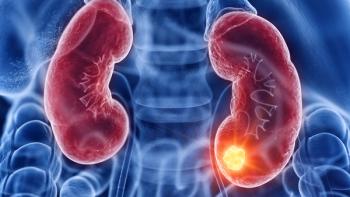
Online Calculator Provides Individualized Assessment of DCIS Recurrence Risk
A nomogram calculates the risk of ipsilateral breast tumor recurrence after breast-conserving surgery.
Kimberly J. Van Zee, MS, MD
Although many treatment options exist for women with ductal carcinoma in situ (DCIS), clinicians often must "guestimate” when it comes to determining the risk of recurrence for patients who choose breast-conserving surgery and how best to manage their care, according to Kimberly J. Van Zee, MS, MD.
In order to help clarify the decision-making process, Van Zee has developed a nomogram that calculates the risk of ipsilateral breast tumor recurrence (IBTR) after breast-conserving surgery.
Ten clinical and pathological variables are taken into account with the nomogram which then estimates a 5- and 10-year risk of recurrence in the same breast. These factors include the patient’s age at diagnosis, family history, prior adjuvant therapy, tumor grade, and surgical margins. The tool is available free of charge on Memorial Sloan Kettering Cancer Center’s (MSK) website (
The calculator is useful to clinicians and patients alike, said Van Zee, who is an attending surgeon at MSK and a professor of surgery at Weill Medical College of Cornell University. She discussed the nomogram in advance of her presentation on the topic at the 33rd Annual Miami Breast Cancer Conference, held March 13-16,2016.
The nomogram can help physicians and patients weigh the pros and cons of the many treatment options available for DCIS by estimating the risk associated with each option. Van Zee said she often sits with patients and plugs information into the calculator so that they can understand their own recurrence risks and treatment choices.
“I find that women are often very educated and they’ve done a lot of research. They come in with 20 pages of questions off the Internet and they really relish having some kind of number to compare their options,” said Van Zee. For patients who might not be as comfortable with numbers, Van Zee translates the predictive values into more understandable terms, for example, “1 in 10 women like you.”
Although serious adverse events from radiation in this treatment setting are rare, Van Zee believes the potential harms must be considered because there is no survival benefit from radiation of DCIS.
“In my practice, I try to help a woman weigh the risks and benefits of the various treatment options according to her own values,” said Van Zee. “One person may be very risk averse, both in terms of any treatment and any risk of recurrence. A mastectomy may be the best option for such a person. “On the other hand, there may be a woman who is very risk tolerant and chooses not to have radiation,” Van Zee said. “The nomogram will give her some estimate of her risk with that option so that she can assess if that risk is acceptable to her.”
To create the nomogram, Van Zee and colleagues looked at recurrences among 1868 patients who had undergone breast-conserving surgery for DCIS at MSK from 1991-2006.1 Van Zee chose 10 variables that have been correlated with recurrence risk in prior research: age at diagnosis, family history, initial presentation, nuclear grade, necrosis, margin status, number of excisions, year of surgery, radiation therapy, and endocrine therapy.
The calculator has since been validated in four external studies in different patient populations, most recently by researchers at Harvard Medical School and Kaiser Permanente, Van Zee said in a presentation at the ASTRO Annual Meeting in October 2015.2,3 The studies calculated how well the nomogram performed in their populations, using a C-index.
The C-index in a perfect model is 1.0, according to Van Zee. The validation studies determined that the DCIS nomogram has a C-index ranging from 0.63 to 0.68, depending on the study, which compares favorably with several commercially available risk-assessment tools.2 Collins et al found that “the overall correlation between 10-year nomogram-predicted recurrences and observed recurrences was 0.95.”3
Van Zee’s next step for the nomogram is to incorporate margin width for women who have undergone surgery for DCIS. She and colleagues have recently published an analysis of margin width and risk of recurrence of DCIS, and she hopes that incorporation of these findings will improve the predictive model even further.4
References
- Rudloff U, Jacks LM, Goldberg JL, et al. Nomogram for predicting the risk of local recurrence after breast-conserving surgery for ductal carcinoma in situ. J Clin Oncol. 2010;28(23):3762-3769.
- Van Zee KJ. Recurrence risk estimation for DCIS treated with breast-conservation: an externally validated DCIS nomogram. Presented at: ASTRO 57th Annual Meeting; October 18-21, 2015; San Antonio, TX.
- Collins LC, Achacoso N, Haque R, et al. Risk prediction for local breast cancer recurrence among women with DCIS treated in a community practice: a nested, case-control study. Ann Surg Oncol. 2015;22(suppl 3):502-508.
- Van Zee KJ, Subhedar P, Olcese C, Patil S, Morrow M. The relationship between margin width and recurrence of ductal carcinoma in situ: analysis of 2996 women treated with breast-conserving surgery over 30 years. Ann Surg. 2015;;262(4):623-631.
Newsletter
Knowledge is power. Don’t miss the most recent breakthroughs in cancer care.
























































































